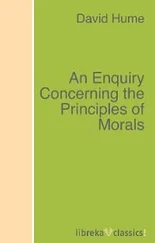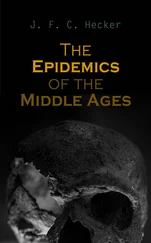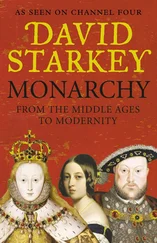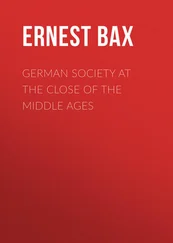To admirers of ancient Greece and Rome one of the most pleasing features of their condition, compared with that of the subjects of the great Iranian monarchy which threatened them in the east, was the absence of a jealous religion controlled by a priesthood possessing immense power in the state and exerting an extreme conservative influence incompatible with the liberty which the city-states of Europe enjoyed. The establishment of Christianity brought Rome into line with Persia. Henceforward both states were governed by jealous gods. Both realms presented the spectacle of a powerful priesthood organised as a hierarchy, intolerant and zealous for persecution. Each district in a Persian province seems to have been under the spiritual control of a Magian high priest (corresponding to a bishop), and at the head of the whole sacerdotal hierarchy was the supreme Archi-mage. 3In some respects the Magian organisation formed a state within a state. The kings often chafed under the dictation of the priests and there were conflicts from time to time, but the priests generally had the moral support of the nobility behind them. They might be defied for a few years, but their power inevitably reasserted itself.
Although both governments discouraged private peaceable intercourse between their subjects, following a policy which reminds us of China or mediaeval Russia, and the commerce between the two countries was carried on entirely on the frontiers, the influence of Persia on Roman civilisation was considerable. We have seen how the character of the Roman army was affected by the methods of Persian warfare. We have also seen how the founders of the Imperial autocracy imitated, in however modified a form, the royal ceremonial of the court of Ctesiphon; and from this influence must ultimately be derived the ceremonial usages of the courts of modern Europe. In the diplomatic intercourse between the Imperial and Persian governments we may find the origin of the formalities of European diplomacy.
It is a convention for modern sovrans to address each other as “brother,” and this was the practice adopted by the Emperor and the King of kings. 4Whatever reserves each might make as to his own superiority, they treated each other as equals, and considered themselves as the two lights of the world — in oriental figurative language, the sun of the east and the moon of the west. 5When a new sovran ascended to either throne it was the custom to send an embassy to the other court to announce the accession, 6and it was consisted a most unfriendly act to omit this formality. The ambassadors enjoyed special privileges; their baggage was exempt from customs duties; and when they reached the frontier, the government to which they were sent provided for their journey to the capital and defrayed their expenses. At Constantinople it was one of the duties of the Master of Offices to make all the arrangements for the arrival of an ambassador, for his reception and entertainment, and, it must be added, for supervising his movements. 7For all important negotiations men of high rank were chosen, and were distinguished as “great ambassadors” from the envoys of inferior position who were employed in matters of less importance. 8
Of the details of the procedure followed in concluding treaties between ancient states we have surprisingly little information. But a very full account of the negotiations which preceded the peace of A.D. 562 between Rome and Persia, and of the manner in which the treaty was drafted, has come down to us, and illustrates the development of diplomatic formalities. 9
We may conclude with great probability that it was the intercourse with the Persian court that above all promoted the elaboration of a precise system of diplomatic forms and etiquette at Constantinople. Such forms were carefully adhered to in the relations of the Emperor with all the other kings and princes who came within his political horizon. They were treated not as equals, like the Persian king, but with gradations of respect and politeness, nicely regulated to correspond to the position which they held in the eyes of the Imperial sovran. This strict etiquette, imposed by Constantinople, was the diplomatic school of Europe.
In the fourth century the eastern frontier of the Empire had been regulated by two treaties, and may roughly be represented by a line running north and south from the borders of Colchis on the Black Sea to Circesium on the Euphrates.
Jovian had restored to Persia, in A.D. 363, most, but not all, of the territories beyond the Tigris which Diocletian had conquered; 10and the new boundary followed the course of the Nymphius, which flows from the north into the upper Tigris, then a straight line drawn southward between Nisibis and Daras to the river Aborras, and then the course of the Aborras, which joins the Euphrates at Circesium. Thus of the great strongholds beyond the Euphrates, Nisibis and Singara were Persian; Amida and Martyropolis, Edessa, Constantia, and Resaina were Roman. 11
The treaty of A.D. 387 12between Theodosius and Sapor III, which was negotiated by Stilicho, partitioned Armenia into two client states, of which the smaller (about one-fifth of the whole) was under a prince dependent on the Empire, the larger under a vassal of Persia. The Roman client, Arsaces, died in A.D. 390, leaving the government in the hands of five satraps. The Emperor gave him no successor, but committed the supervision of the satrapies to an official entitled the Count of Armenia, and this arrangement continued till the sixth century. 13
The Roman system of frontier defence, familiar to us in Britain and Germany, was not adopted in the east, and would hardly have been suitable to the geographical conditions. In Mesopotamia, or in the desert confines of Syria, we find no vestiges of a continuous barrier of vallum and foss, such as those which are visible in Northumberland and Scotland and in the Rhinelands. The defensive works consisted of the modern system of chains of forts. The Euphrates was bordered by castles, and there was a series of forts along the Aborras (Khabur), and northward from Daras to Amida. 14
The eastern frontier of Asia Minor followed the Upper Euphrates (the Kara-Su branch), and the two most important bases were Melitene in the south and Satala (Sadagh) in the north. 15Melitene was equally distant from Antioch and Trebizond, and it could be reached from Samosata either by a direct road or by a longer route following the right bank of the Euphrates. Beyond the Euphrates lay Roman Armenia (as far as a line drawn from Erzerum to the Nymphius), which in itself formed a mountain defence against Persia.
The great desert which stretches east of Syria and Palestine to the Euphrates, and the waste country of southern Mesopotamia, were the haunt of the Nabatean Arabs, who were known to the Romans as Saracens or Scenites (people of the tents). They had no fixed abode, they lived under the sky, and a Roman historian graphically describes their life as a continuous flight: vita est illis semper in fuga . 16They occupied all the strips of land which could be cultivated, and otherwise lived by pillage. They could raid a Roman province with impunity, for it was useless to pursue them into the desert. Vespasian used their services against the Jews. In the third century some of their tribes began to immigrate into Roman territory, and these settlements, which may be compared to the German settlements on other frontiers, were countenanced by the government. Beyond the frontier they remained brigands, profiting by the hostilities between Rome and Persia, and offering their services now to one power and now to the other. In the south many were converted to Christianity in the fourth and fifth centuries, through the influence of the hermits who set up their abodes in the wilderness. 17These converts belonged chiefly to the tribe of Ghassan, and we shall find the Ghassanids acting, when it suited them, as dependents of the Empire; while their bitter foes, the Saracens of Hira, 18who had formed a powerful state to the south of Babylon, are under the suzerainty of Persia. These barbarians, undesirable either as friends or foes, played somewhat the same part in the oriental wars as the Red Indian tribes played in the struggle between the French and English in North America.
Читать дальше












